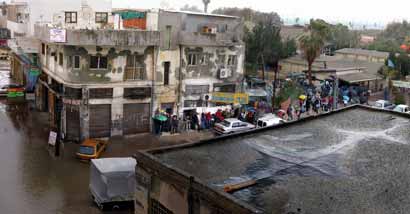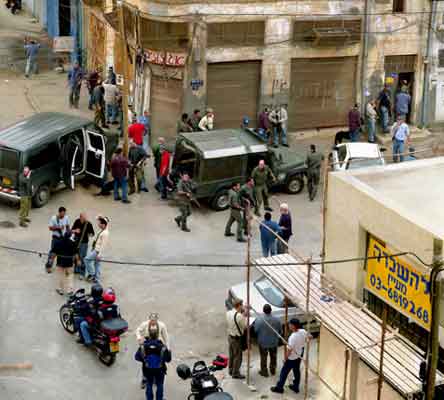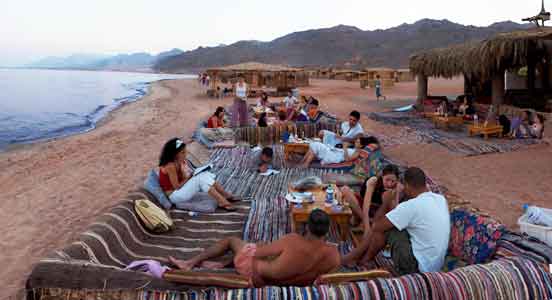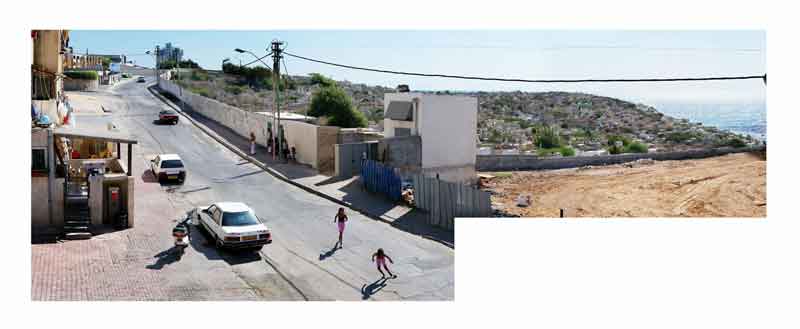| With one exception (Dream Sinai, a
circle within a square that is also the only photo without people), the scenes
are horizontal, some extremely so. In Salame, the long, narrow format
literally suggests a story, a line of text reading from right to left, as though
in Hebrew or Arabic. A car at the center, from which the driver looks toward
us, has moved halfway, paralleling our own vision, from the cross-street on the
right to the one on the left. Everything takes place in front of us, parenthesized
by the two end streets lunging into depth. This is what is happening, contained
within the interlocking structures of cars, houses, streets, with the implication
that paths to other places, at the ends of this scene, will lead to another set
of circumstances, another reality nonetheless related to this one.
That is the tension in all Frydlender's pictures. They are
knitted together like fabrics--human movements, gestures, and intentions woven
into each other and into extraordinarily complex structures of verticals and
diagonals within the generally horizontal overall shapes. The chains of existence
seem almost unbreakable. But, of course, they are composed of elements that are
in a constant state of flux and happen to come together in certain ways. And
the artist extends that process by forming his own patterns out of digital segments.
The scene of young bathers on a Sinai beach in Egypt (Sinai, Smoking)
has all these qualities, bridging time and space in the figures of people walking
and reclining. It must be near the places where 35 people were killed in explosions
in early October. |




